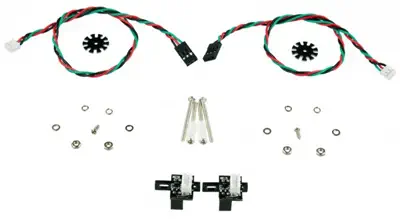Pagos y Seguridad
Su Información de Pago se procesa de forma segura. No almacenamos los datos de la tarjeta de crédito ni tenemos acceso a la información de su tarjeta de crédito.
Descripción
Archivo ZIP
- Voltaje: + 5V
- Corriente: <20mA
- Resolución: 20 PPR
- Peso: 20g
Estimar envío
También le puede interesar


SKU: RB-Dfr-745


SKU: RB-Dfr-67


SKU: RB-Dfr-324
Reabastecimiento pronto Ver fecha de entrega
Notificarme

SKU: RB-Dfr-13


SKU: RB-Dfr-1416


SKU: RB-Rbo-122


SKU: RB-Dfr-1395

SKU: RB-Dfr-1415


SKU: RM-ESMO-0AW


SKU: RM-ESMO-0AY







